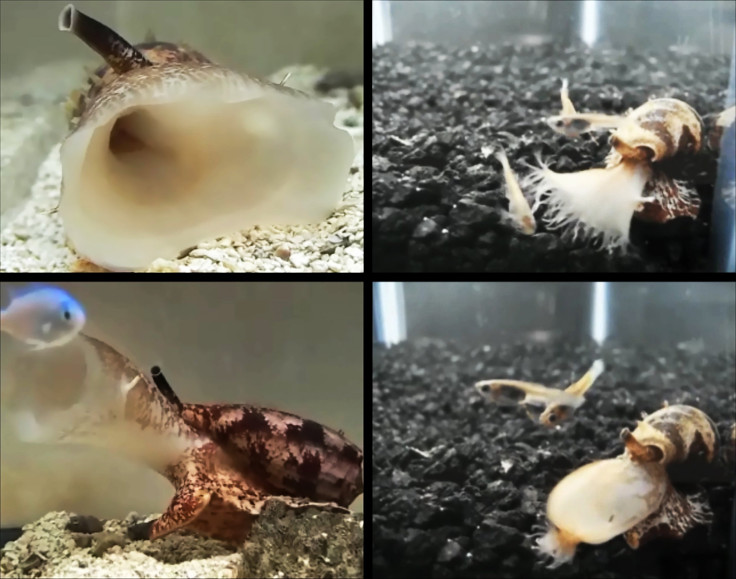Sea-Dwelling Snails Produce Unique Type Of Insulin To Disable Prey
Slow-moving cone snails use a unique tactic to catch prey that are much faster than them -- they release a kind of toxic insulin, which disables the prey by targeting the nervous system, scientists said in a new study published in the journal Proceedings of the National Academy of Sciences.
According to the study, some cone snails -- abundant in most tropical marine waters -- add a “weaponized” form of insulin to the venom cocktail they use to immobilize fish. When injected into a prey, the insulin causes the blood glucose levels to plummet, making the animal sluggish. At this stage, the snail approaches the prey with what is called a “false mouth,” drags the prey into its mouth and then stings it with another type of toxin to completely paralyze the victim.
“This is a unique type of insulin. It is shorter than any insulin that has been described in any animal,” Baldomero M. Olivera, a professor of biology at the University of Utah and a senior author of the study, said in a statement. “We found it in the venom in large amounts.”

As part of the study, scientists examined the gene sequences of all the proteins in the venom gland of Conus geographus, a cone snail that has killed many people in accidental encounters. The scientists detected two sequences that looked similar to that of the hormone insulin, used by humans and other vertebrate animals to regulate metabolism of carbohydrates and fats.
Scientists believe that the snail insulin could prove to be a useful tool to study the systems the human body uses to control blood sugar and energy metabolism.
“The snail insulin consists of 43 amino acid building blocks, fewer than any known insulin. Its stripped down size and odd chemical modifications may have evolved as a way to make it better at causing hypoglycemia in prey,” the scientists said in the statement.
© Copyright IBTimes 2024. All rights reserved.






















